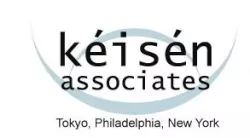As we say in Japan, "Even monkeys fall from trees." Even expert inventors, applicants, writers, and agents can make errors in their patent documents. Clients have approached us concerning various errors made in their PCT international patent applications, wondering what they can do to correct errors for the Japanese national phase entry.
Do we really need a separate Amendment to file corrections?
Yes. In order to correct something in the PCT application when or after bringing it into the Japanese national phase, one must file a proper Amendment. You should not insert a correct version by only adjusting the translation of the PCT application.
This is because the PCT international application is a binding application considered to be continued in the national phase(s). The national phases of it are not considered new applications where things can be tweaked, but merely the same application translated into one of the accepted languages of the national phase. A change even as minor as a correction needs to be made as an Amendment.
We used a wrong term one or two times; will the JPO accept an Amendment of an obvious error?
If the errors are obvious mistakes (such as writing in one case "micro-" as "milli-" when in all other places "micro-" is used), you may file a Preliminary Amendment to correct it and (and, optionally, a Petition to prove that no new matter is being introduced by the Preliminary Amendment). In Japan, this Preliminary Amendment could be filed up to the filing of a Request for Examination (or at other times up to receiving a First Office Action, and when responding to each Office Action).
We consistently used a wrong word in the PCT application! Can we correct it?
Please note that if a specific term is consistently wrong, there still needs to be a basis in the original PCT application for the correction. It is important to be able to prove that the incorrectly written term was a typo of the more consistently used, correct one.
Do not casually assume that a frequent error can be fixed through translation or by Amendment in the Japanese national phase. However, there can be ways to make acceptable corrections on a case-by-case basis, not giving up hope of an acceptable amendment too quickly. We would be happy to receive consultation on a specific problem.
May we change British (Imperial) units to Metric units in the translation?
If able, please avoid using the British measurement system in a PCT international application that will be brought into Japan for examination! Japanese examiners consider applications using metric units and may even issue an Office Action requiring inclusion of metric conversions for figures given in the Japanese phase of the PCT application.
A translation into Japanese needs to retain the wording of the original, so if possible it would be wise to use metric units for the international application. If you did use inches, pounds, psi, or other of the British system units, be aware that you might need to provide corresponding metric units later in the application process.
The content of this article is intended to provide a general guide to the subject matter. Specialist advice should be sought about your specific circumstances.

